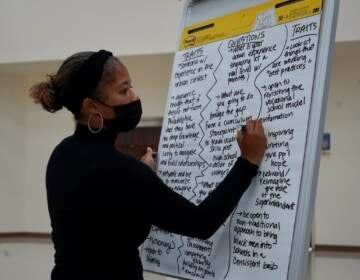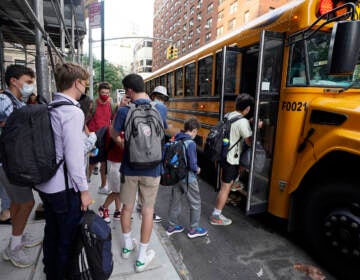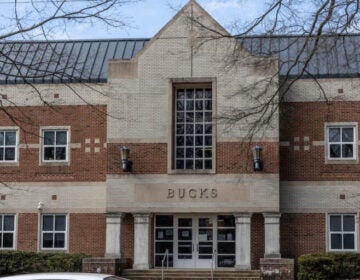Big money is pouring into Pa. school board elections, proxies in wars over COVID and culture
In the wake of widespread virtual classes, candidates for school board are in the last days of the most intense, divisive races they’ve ever seen.
Listen 6:19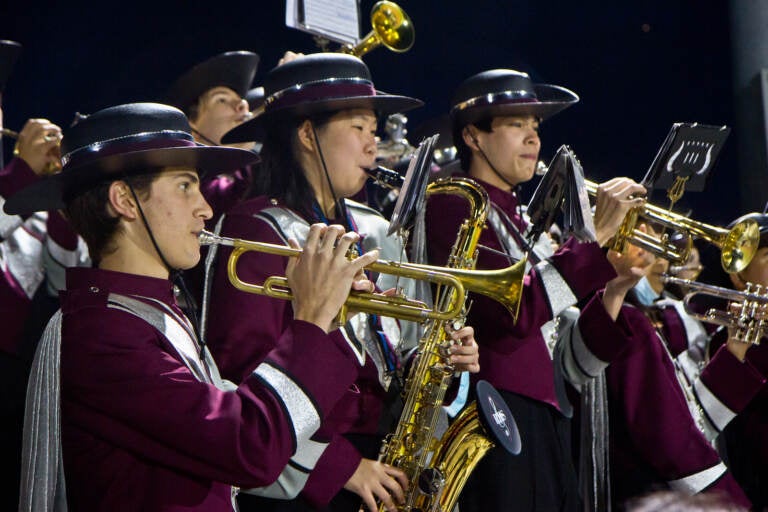
The Radnor High School band plays at the Friday night football game on October 22, 2021. (Kimberly Paynter/WHYY)
Ruchira Singh decided to run for school board in Avon Grove for a “very local reason:” building maintenance.
Before this election cycle, the board of the rural Chester County district had been debating building a new high school. Board members from her region were against it, which she saw as part of a consistent pattern opposing infrastructure investment.
So, this year, she threw her hat in the ring, running as a Democrat in a district whose four schools serve about 5,000 students, including her two children.
It wasn’t long until she found herself in the middle of the culture war.
A few weeks before the primaries, someone approached Singh at a meet-and-greet and grilled her about her stance on critical race theory — an academic framework mostly confined to higher education that examines the impact structural racism has had on American institutions.
“I had to learn very quickly what critical race theory meant, which I had not heard of,” said Singh, an Indian-American who identifies as an independent.
It was the first real hint that national wedge issues would show up in the local race.
Soon, Singh said issues like CRT popped up over and over, and she felt like hostility was rising at some local events.
“People would show up dressed in a certain way, with 1776 attire or a Second Amendment t-shirt, asking us about our views on diversity,” she said.
The comments on the Facebook page she ran with fellow candidate Bruce Belcher became so hostile, they ended up taking it down.
Singh said she didn’t expect the race to become so divisive, but also sees how hot button issues are more likely to get voters out to the polls, especially in an off-year election.
“The threat of ‘indoctrinating the kids’ is a lot more effective in getting people out to vote versus just, ‘Hey, I think we need more money to continue maintaining our schools,’” Singh said.
What’s playing out in Avon Grove is part of a now well-documented trend — fueled in part by a wave of new political spending that’s touted as bipartisan, but that a Keystone Crossroads review found is heavily skewed toward Republicans.
In the wake of widespread school closures in 2020-2021, interest in school board meetings and elections has surged throughout the country, and candidates are in the last days of what many say are the most intense, acrimonious races they’ve ever seen.
Once “pretty low key, low attention, often boring and mundane affairs,” they are garnering more attention and more political spending, said Jeffrey Henig, director of the politics and education program at Columbia University’s Teachers College.
In Pennsylvania, at the heart of it is a libertarian donor from Bucks County who is pumping hundreds of thousands of dollars into dozens of the closest races, including Avon Grove.
The force behind the money, venture capitalist Paul Martino, 47, has been emphatic about two points: his spending campaign is bipartisan, and his only official position is that schools should allow students to learn in person.
However, a review of the political action committees and candidates that received money from Martino found that nearly everyone who benefited is a Republican —many of whom reflect the GOP’s nationwide push to clap back against COVID-19 mitigation efforts and curricula that confronts America’s legacy of racism.
Throughout the pandemic, school board meetings in Pennsylvania and across the country have turned increasingly hostile, as they become proxy sites for the biggest fights on the national stage. Fierce debates over masks, vaccines, and other COVID safety measures, along with fights over curriculum decisions rooted in the racial reckoning in the aftermath of George Floyd’s murder have dominated meetings. Some school board members have faced violent threats, and meetings have been abruptly halted, sometimes due to people refusing to wear masks.
“There have always been sporadic outbursts of attention and controversy” around school board decisions, Henig said, citing fights over teaching creationism versus evolution as an example. “What’s different now, I think, is that these are not so much a smattering of outbreaks in particular communities but it’s a simultaneous outbreak in multiple communities.”
‘Not good enough for my kids’
For Paul Martino, the entrepreneur funding the PACs, interest in school board races sprouted from his experience as a dad frustrated that his kids were being forced to attend school virtually.
“What we found time and time again is most of the schools were closed at the beginning of the last calendar year, not actually because of COVID — indirectly because of COVID, of course — but because of administrative errors,” said Martino, who lives in the Central Bucks School District. “You didn’t hire enough teachers. You weren’t prepared for this contingency. You didn’t insert the new air filter.”
It didn’t sit right with him.
“The eight-time company founder, CEO, coach, in me was like, ‘Wow, this is my kids at stake here. Like, that’s not good enough for my kids.’”
In summer 2021, Martino linked up with another concerned parent, Clarice Schillinger of Montgomery County, and formed the Back to School PA PAC. To date, it has raised $721,000 and poured most of it into 55 different school board races across the commonwealth, primarily in $10,000 increments. Some races considered particularly competitive — particularly ones in the Philly collar counties — got even more support.
According to campaign filings, $560,000 of that money has come directly from Martino. The rest is from other big donors who liked his approach — like $130,000 and $15,000 respectively from the Commonwealth Children’s Choice Fund and Students First, two conservative PACs closely tied to Pennsylvania’s richest person, professional gambler turned powerful Wall Street trader and school choice advocate Jeffrey Yass.
Back to School PA’s giving strategy is intentionally decentralized. It doesn’t give directly to candidates. Instead it vets local organizers involved with competitive school board races, choosing people who align with their general philosophy. Those organizers then form their own committees, and the money flows from PAC to PAC.
Martino says he sometimes doesn’t know details about the specific platforms of the individual candidates that his group is indirectly supporting. To him, that is a feature, not a bug.
“The fact that we’ve made this broad tent is what I’m excited about, and we explicitly stay away from those other issues,” he says referring to positions on mask mandates, vaccines and curriculum choices. “We know our candidates have points of view on that.”
The tent is only so broad, though.
Martino notes, Back to School’s four-person staff is politically mixed — two registered Republicans, two registered Democrats. In interviews, he and Schillinger both estimated that about a third of the candidates they’d supported were Democrats and the rest were Republicans — a statistic they’ve repeated in other news coverage of their project.
But a review of Back to School’s campaign filings and a closer look at the many ground-level PACs and candidates they’re funding reveals a much less politically diverse pattern: the vast majority of the PACs are backing registered Republicans.
The 43 PACs that made their funding and endorsements public enough to easily assess who they were giving to backed 156 different candidates across the state. Of those, 133 were from the GOP.
One was a registered Libertarian, three more were unaffiliated or registered as independent, and three couldn’t be located in state voter files. Ten were registered Democrats.
Gridiron fight
Last year, as COVID-19 surged and most events were shut down or shifted online, Josh Tessler, then a junior at Radnor High School, got a text from a friend.
It was an invitation many teenagers aren’t used to getting.
Was he going to the next school board meeting?
“She’s like, ‘You should do it. We’re all going. We’re all gonna hop in a call together, and we’re all going to watch it together on Zoom,’” Tessler recalled.
At the time, the Radnor community was deep in a debate about changing the high school’s Native American mascot, known as the Raider. After a student-led push to “retire the Raider,” the school board held a special meeting to get community input on the issue. It lasted more than four hours — one of many heated, highly attended meetings.
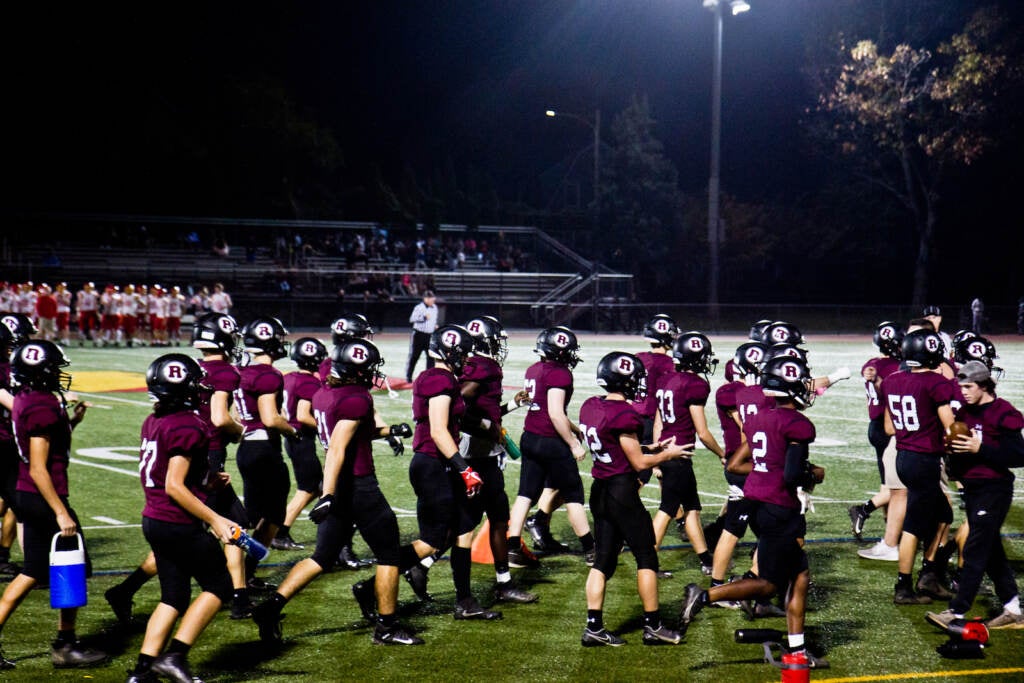
Many community members agreed that the Native American imagery should go, but some argued that the name Raider wasn’t itself offensive, noting the professional football team.
Tessler and his friends sat together in a voice chat, discussing the comments. He can recite the opposing views that came up repeatedly:
This is not the time. We’re in a pandemic. The Raider’s an integral part of our heritage. It’s not racist. I’m not a racist, but…
It’s socially insensitive. It’s politically incorrect.
Mascots aren’t that big of a deal. This is silly.

“It was early COVID. Everyone had tons of time on their hands and there were no social events. So with that, what do you do? You go to the school board meeting,” Tessler said. “It definitely became a social event where people were going, ‘Oh, did you go to the school board meeting? Oh, did you see what people said?’”
The all-Democratic board eventually voted 9-0 to remove Native American imagery and 8-1 to replace the name. After a contentious mascot selection process, students officially became the Raptors in June, with a new logo released in September.
“Once they got rid of the imagery, I was like, ‘Whatever happens from here, as long as you’re not having racism against another group, then who cares?’ said Tessler. “It’s a mascot.”
But for some, anger over the name change — and frustration with the renaming process — is still raw, an animating issue in the upcoming school board election.
At a recent football game, cheerleaders in maroon and white uniforms shouted for the Raptors. Players wore helmets with a modified version of the school’s signature “R,” no longer surrounded by feathers.
Rebecca Meyers-Emory watched her sophomore daughter cheer for the team.
“I’m not happy with the name change,” she said. “It was done when we were too busy focusing on COVID.”
Like other dissatisfied parents, she thought removing the Native American imagery was enough, and she said it was “disgusting” that some students who staged a walkout protesting the name change were called racist.
“How many years have we been the Raiders?” said the Wayne native. “There’s not a lot of traditions. Let’s hold on to the ones we have. Keep what we have.”
Others in the bleachers praised the board’s decision, both around changing the mascot and around COVID-19 safety measures.
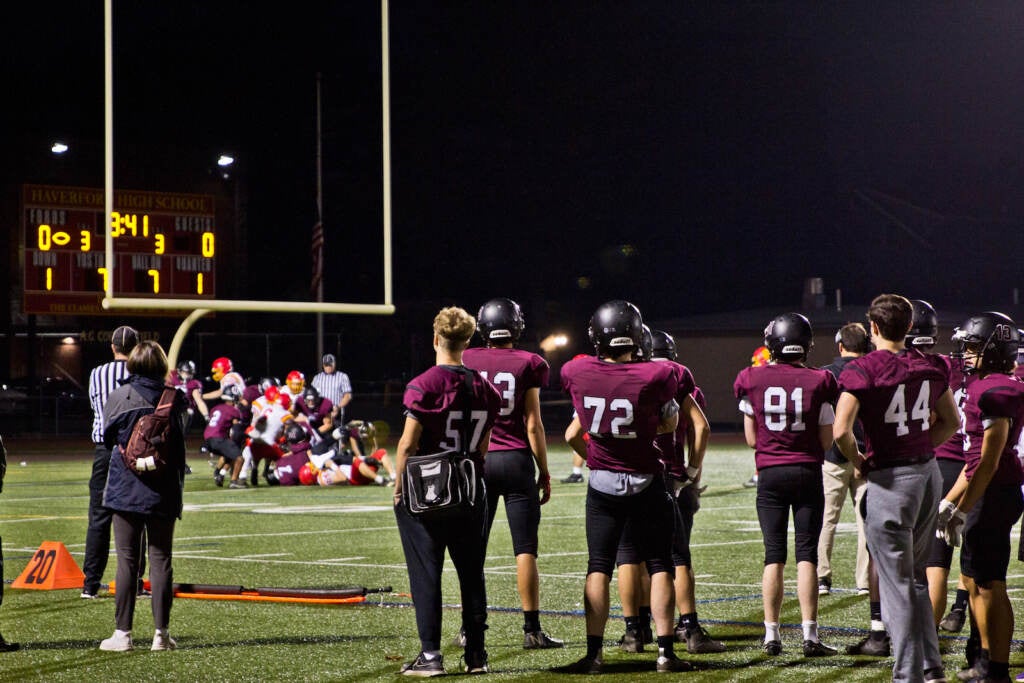
“We pride our school district on being respectful of children, respectful of each other’s cultures,” said Carol Sulcoski, a mom of three recent Radnor graduates and a volunteer leader of the marching band. “This isn’t about you and how sad you are that this logo’s gone. It’s about being respectful to people who have been treated, in the past, terribly, and who were here first.”
The local PAC, Reopen Radnor Committee, is backing a slate of Republican candidates. The PAC describes itself as a “bipartisan group dedicated to electing a non-partisan school board,” but all the candidates are registered Republicans, and multiple fans at the football game — including those who plan to vote for at least some of the Reopen candidates, out of a feeling that the current board is too politicized — said they view them that way.
The money that flowed into these school board races from Martino and Back to School PA also changed the nature of the races, according to candidates on the ground.
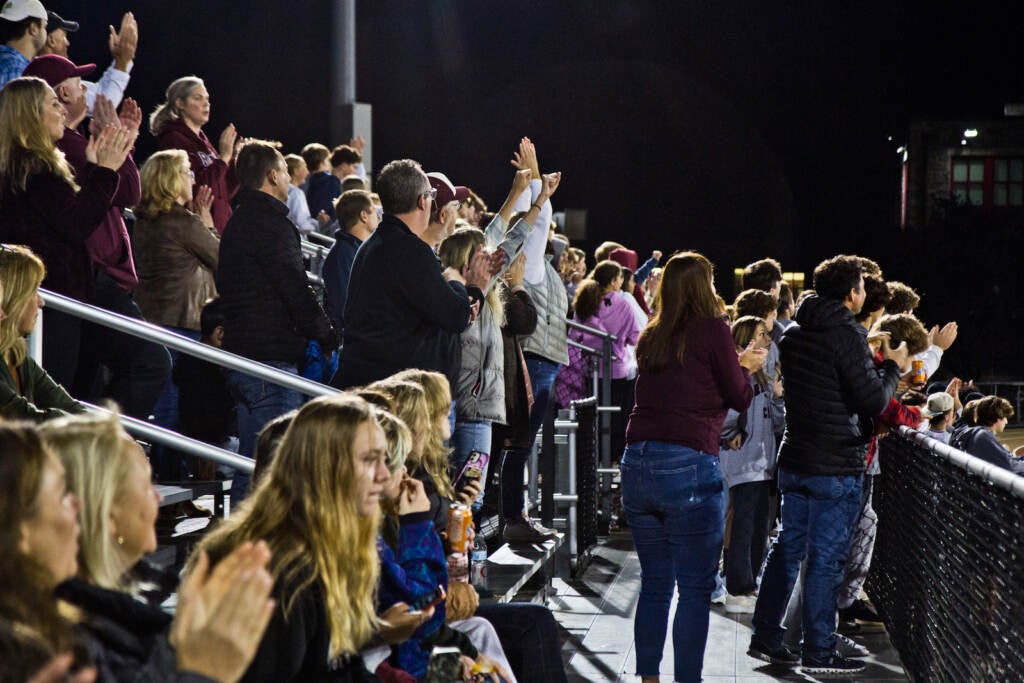
“We’ve never seen this kind of money poured into a campaign,” said Susan Stern, Radnor’s current board president who is seeking another term. “It really caused us to take a look at, you know, what kind of money were we going to have to spend on our campaign?”
‘Che Guevara’s nephew’
In most years, school board candidates typically raise a negligible amount of money. They aren’t required to file campaign finance reports at all if they pledge to pull in less than $250, and in both the Radnor and Avon Grove races, several candidates opted to take that route.
That doesn’t mean they haven’t benefitted from spending. In both school board races, the local PACs funded by Martino’s cash spent freely on their endorsed candidates’ behalf.
In Avon Grove for instance, the Excellence in Education PAC ended up with more than $18,600 to spend on four candidates, $10,000 from Martino, and the rest from other local supporters — far outpacing Democrats’ fundraising efforts. Through mid-October, they’d spent nearly $9,000 on signs, mailings, and slick videos — one of which called incumbent school board Democrat Bill Wood a democratic socialist who supports bringing “Marxist agendas into our schools.”
Wood’s opponent, Michael Bruecks, declined an interview, but has been active on Facebook throughout his campaign, and has also affiliated himself with right-wing group Turning Point USA, which keeps a “school board watchlist” to track members it deems too liberal. Bruecks sees a crisis in Avon Grove thanks to “radical political ideologies.”
On social media, he wrote some local parents have told him their children “are no longer welcomed in their friend groups, ridiculed about their traditional values, religious beliefs, pride in their country, and political opinions. As a result, these students have become depressed.”
In a recent interview, Wood mocked the attack ad and other critiques as baseless smears.
“Bill Wood doesn’t want you to know that he is really Che Guevara’s nephew who was kidnapped by aliens in Roswell, New Mexico in 1965,” he said sarcastically, lowering his voice to a deep, scary campaign timbre. “And now he’s back to take over your school board.”
As evidence of alleged Marxism, the video points to a webinar Wood attended to help school board members understand critical race theory, and a curriculum consulting group the district at one point considered, but ultimately rejected.
Wood and fellow Democrat Ruchira Singh say while they think it’s healthy to study the legacy of racism, CRT was never going to be part of the Avon Grove curriculum.
Singh, who moved to the U.S. from India two decades ago, laughed at the idea that she would promote Marxism or anything like it. “I’m a first generation immigrant. I moved here for a reason. I love this country.”
Mike Woodin, a father of two current and one future Avon Grove students, is running as a Republican in the same region as Singh. His campaign materials say he stands for things like transparency, respect, and unity.
Speaking of the campaign ad, he said: “It wasn’t necessarily my style. It reminded me of a national kind of political ad. My style is to try to get out there and communicate clearly with folks.”
As debates about national issues are playing out across the region, students are watching.
Gabrielle Johnson, a sophomore at Springfield Township High School, said it’s disheartening to hear adults fight against critical race theory. Few, she thinks, actually understand the concept; too many use it as a catch-all for any acknowledgment of race in classrooms.
“I’m honestly disappointed in how adults are handling it, because, out of everybody, they’re the ones that really do control a student’s learning. So they should understand what they’re talking about,” said Gabrielle Johnson, a sophomore at Springfield Township High School. “People say it’s going to teach white children to hate themselves when it’s really just teaching about the history of how race has affected America since its founding.”
Johnson, who is Black, said she would like to see inclusive history classes that teach about multiple cultures. She pointed to a class project she worked on in her 7th grade history class, where she focused on ancient Mali.
“That was the first time in school that I have ever been taught about African or really any minority history, and that was really important to me,” she said, adding that it was especially meaningful to learn about 14th century ruler Mansa Musa.
“I’m usually used to seeing Black people being told, ‘You’re not going to be successful’ or ‘You’re not going to be anything in life.’ It was nice to see that one of the richest people to ever exist was a Black man.
‘What a democracy actually is’
Jeffrey Henig with Columbia University said the increased focus on school board races is part of the “nationalization of education politics in the U.S.”
“Increasingly, national groups of various kinds have seen local school board elections as tactically important and have put money and people into local communities to try to have some influence on the local political outcomes, but also because they perceive the chance to use education as a way to build support for broader political goals,” he said.
In suburban districts, injecting culture war politics into school board races is one potential way to mobilize voters and recapture Republican support in areas where it has waned recently in presidential and congressional and county-wide races.
Henig says the fact that these larger, coordinated campaigns are catching fire on the local level reflects actual grassroots backlash.
“I don’t think that outside actors can make a movement jump up on demand. They can move in strategically where there are real grievances,” Henig said. “If the discontent isn’t there, then their throwing matches would be like throwing matches on wet ground.”
In districts across the state and country, demand for change in school board leadership comes after an extremely challenging 18 months, when nearly every option for schools and families was less than ideal.
“No matter what decision we made last year, a third of the people would be angry, a third would be furious, and a third would be just plain upset,” said Wood. “It was a terrible situation for everyone. We did the best we could.”
Studies have shown that virtual school resulted in significant learning loss for students, both academically and from a social-emotional standpoint. The remote school year was incredibly challenging for parents, juggling work and other responsibilities while helping their children learn. It was also incredibly challenging for students, many of whom struggled with feelings of isolation and felt disconnected academically.
Even for those happy with districts that approached the pandemic in the most risk-averse ways, there has been a near universal understanding that virtual education presented steep challenges, especially for children from the most disadvantaged backgrounds.
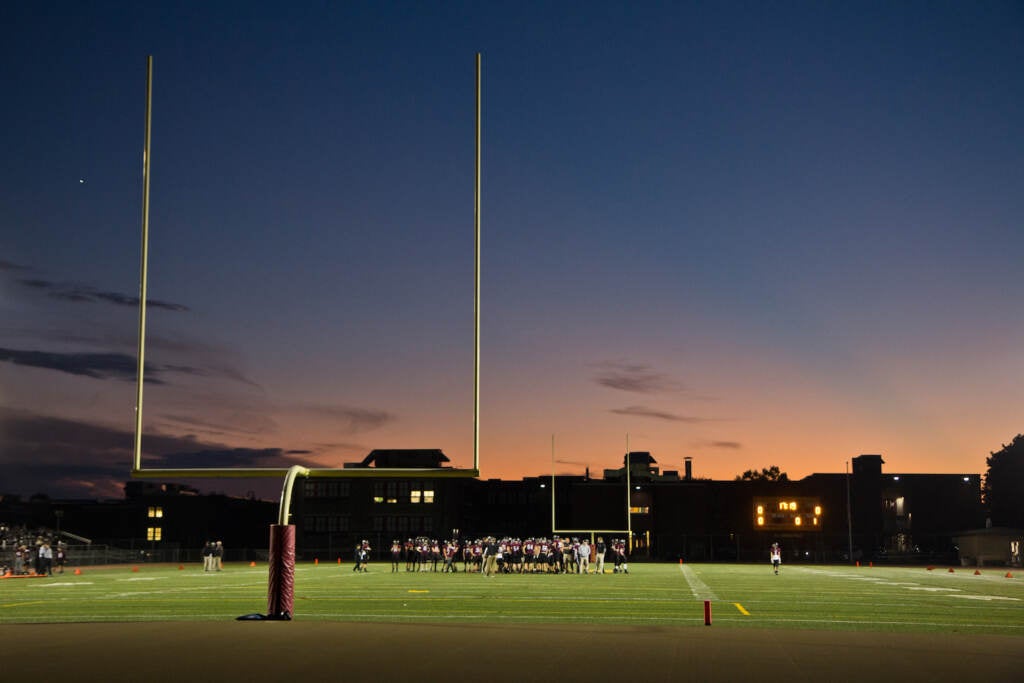
Now, even with most, if not all, Pennsylvania schools fully reopened, many parents remain wary, fearing another COVID surge could send students right back into virtual classrooms. That has been the constituency pushing hard for candidates vowing to keep kids in the building.
Many of those candidates, though, are also finding support from voters who are increasingly skeptical of a laundry list of other decisions school leaders make.
At a Radnor School Board meeting last week, a small but passionate group of parents turned up to rail against what they called “pornographic” material in the school libraries.
Parent Clark Engel said frustration about the school’s books pushed him to move his two youngest children to private school.
“Lots of little things go on throughout the year that are all subliminally designed to tell students that they don’t have to listen to their parents — that they can decide for themselves what gender they want to be, what sexual orientation they want to be, what religion they want to be,” he told Keystone Crossroads. “It’s all designed to subvert parents. They’re laying the groundwork in these very early, formative years.”
He supports the slate of candidates backed by the Reopen Radnor Committee.
“Even if I’m pulling my own children out, I feel like I need to do this as a public service for those that can’t afford to go to a private school,” he said.
Some observers watching the more radical Pennsylvania school board races have noted, potential board members who are too focused on national, hot-button issues will be in for a surprise if they get elected.
“When you actually get seated on the board, you’re going to sit through a lot of boring discussions and presentations,” said Larry Feinberg, president of the Haverford School Board, where he’s served for more than two decades. “That’s what democracy actually is. A great deal of it is not very exciting.”
For Josh Tessler, the Radnor High School student, the past year has made him pay more attention to the school board race. For him, the biggest issue isn’t around the district’s handling of the mascot controversy or coronavirus pandemic. He’s passionate about two issues no candidates seem to be talking about: hands-on learning and feeling overwhelmed by homework.
“I think they should be focused on the experience of students,” he said.
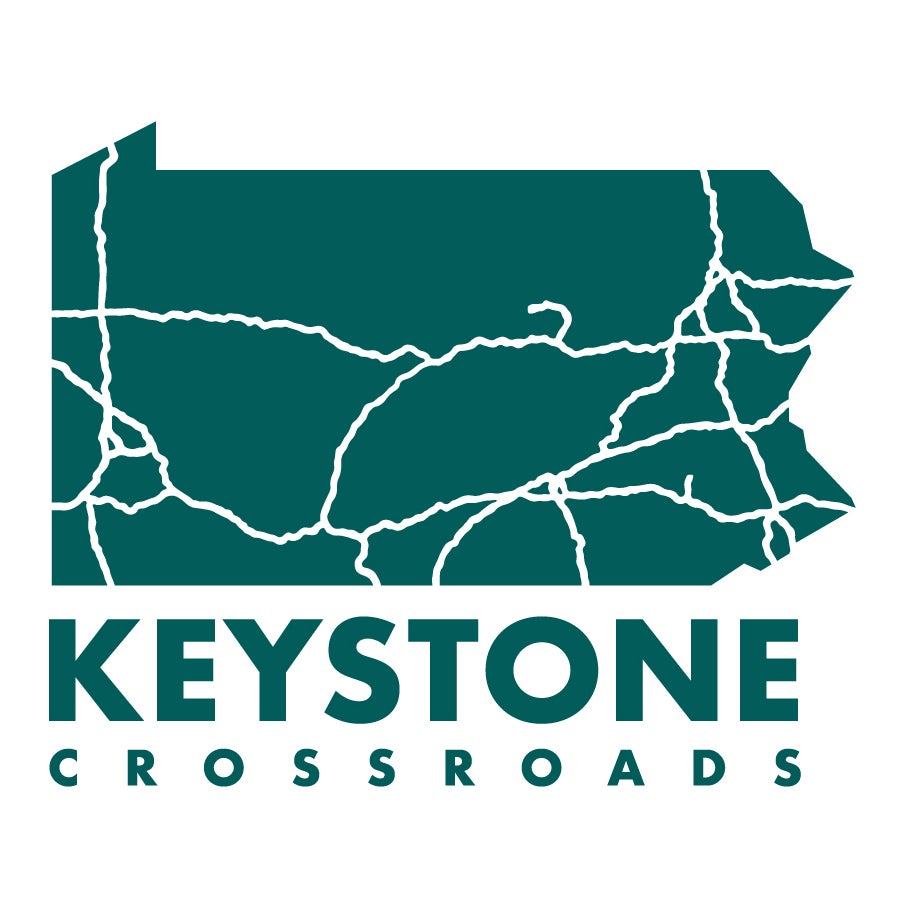
Get more Pennsylvania stories that matter
WHYY is your source for fact-based, in-depth journalism and information. As a nonprofit organization, we rely on financial support from readers like you. Please give today.



